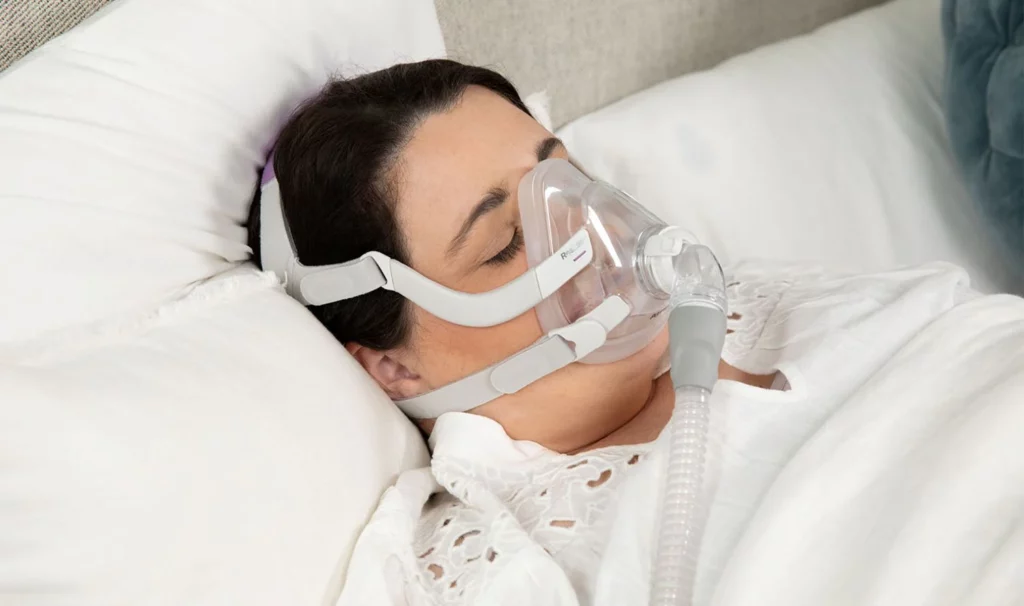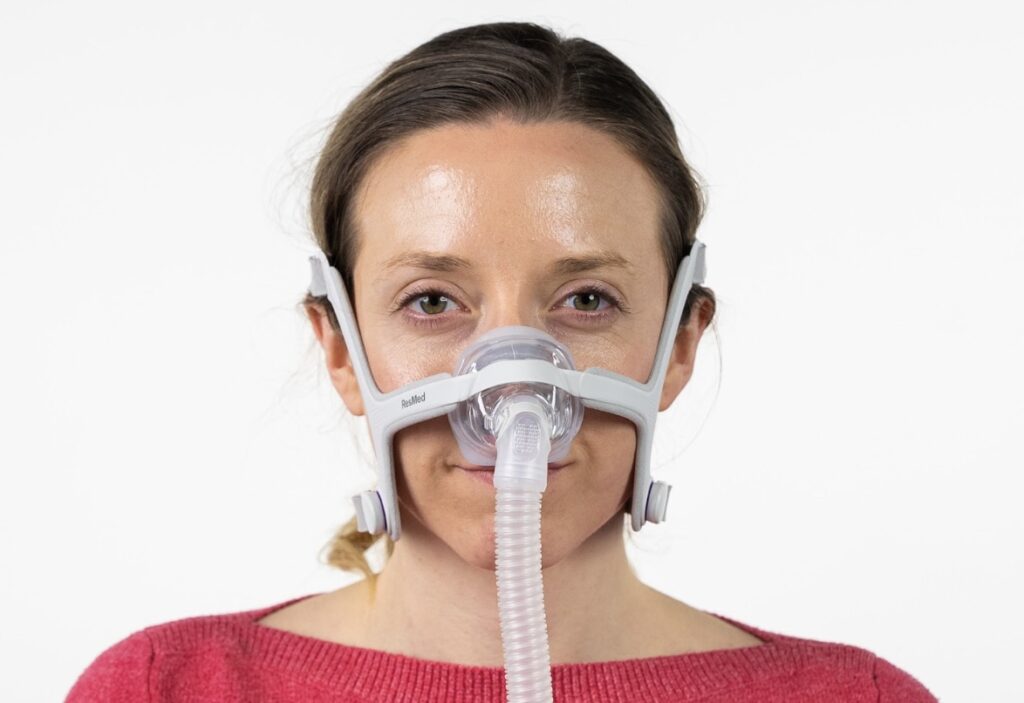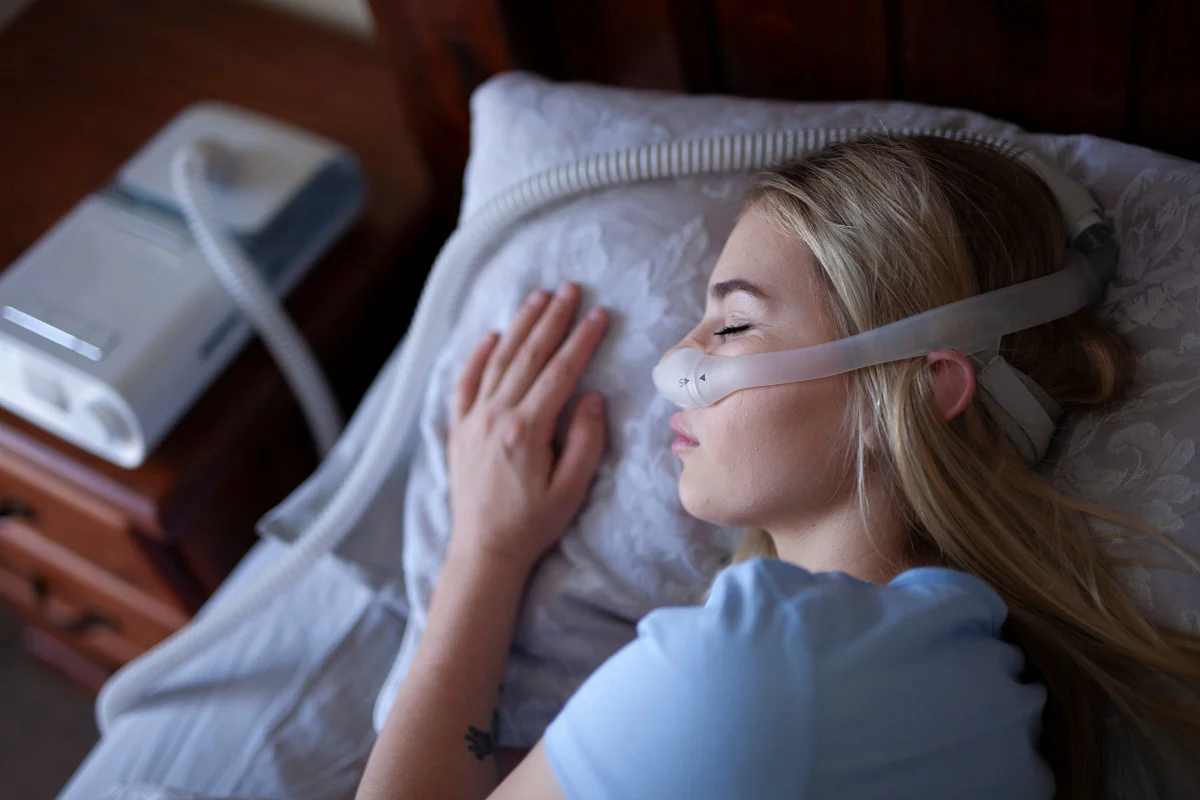Understanding CPAP Therapy
Continuous Positive Airway Pressure (CPAP) therapy is a common treatment for obstructive sleep apnoea, a condition that disrupts sleep by causing breathing difficulties. The therapy involves wearing a CPAP mask connected to a machine that delivers a steady stream of air, helping to keep the airways open during sleep. Choosing the right CPAP mask is crucial, as comfort and fit can significantly impact the effectiveness of the treatment.
One of the primary considerations when selecting a CPAP mask is the sleep position. Different sleep positions can affect how well a mask seals and remains comfortable throughout the night. This article explores the best CPAP masks tailored for various sleep positions, ensuring a restful and uninterrupted night’s sleep.
Moreover, the psychological aspect of using CPAP therapy should not be overlooked. Many users initially struggle with the idea of wearing a mask while sleeping, which can lead to anxiety and reluctance to use the device consistently. Support groups and educational resources can be invaluable in helping individuals adjust to their new routine. Understanding the benefits of CPAP therapy, such as improved energy levels and overall health, can motivate users to embrace the treatment fully. Engaging with healthcare professionals who specialise in sleep disorders can also provide personalised advice, making the transition to CPAP therapy smoother and more effective.
Side Sleepers
Side sleeping is a popular position, but it can pose challenges for CPAP users. Masks designed for side sleepers need to accommodate the pressure from the pillow while maintaining a secure seal. Here are some of the best options:
Additionally, the choice of best CPAP machine settings can also play a vital role in the overall success of the therapy. Many modern CPAP machines come equipped with advanced features such as auto-adjusting pressure settings, which can adapt to the user’s breathing patterns throughout the night. This adaptability not only enhances comfort but can also lead to improved compliance, as users are more likely to continue with their therapy if they experience less discomfort. Furthermore, regular maintenance of the CPAP machine and mask is essential to ensure optimal performance and hygiene, as accumulated dust and moisture can lead to respiratory issues.
Ultimately, the best CPAP mask is one that provides a secure fit, comfort, and ease of use. By taking the time to explore different options and considering individual needs, users can significantly improve their CPAP therapy experience, leading to better sleep and overall health.

1. Nasal Pillow Masks
Nasal pillow masks are an excellent choice for side sleepers due to their minimalistic design. They consist of two small pillows that fit snugly into the nostrils, allowing for greater freedom of movement. This design reduces the chances of discomfort from the pillow pressing against the mask.
Additionally, nasal pillow masks are lightweight and less obtrusive, making them ideal for those who prefer to sleep on their sides. They also tend to be quieter than other mask types, which can benefit both the user and their partner.
2. Hybrid Masks
Hybrid masks combine features of both nasal and full-face masks, providing flexibility for side sleepers. These masks cover the mouth while using nasal pillows for the nostrils, allowing for mouth breathers to receive adequate therapy without compromising comfort.
Read more at: Tired of Trial and Error Buy a CPAP Mask That Really Works
The hybrid design often includes a soft, flexible frame that adapts to the contours of the face, ensuring a secure fit regardless of sleep position. This adaptability makes them a popular choice among side sleepers who may shift positions throughout the night.
Back Sleepers
For those who sleep on their backs, a different set of considerations comes into play. Back sleepers generally require masks that provide a secure fit without causing discomfort or obstructing airflow. Here are some recommended masks: Learn more about discomfort at https://pubmed.ncbi.nlm.nih.gov/35020611/

1. Full-Face Masks
Full-face masks cover both the nose and mouth, making them suitable for back sleepers who may breathe through their mouths. These masks create a secure seal, ensuring that air pressure remains consistent throughout the night.
While full-face masks can be bulkier, many modern designs offer improved comfort features, such as soft cushioning and adjustable straps. Users should look for masks with a low-profile design to minimise discomfort when lying on their backs.
2. Nasal Masks
Nasal masks are another viable option for back sleepers. They cover only the nose, making them less intrusive than full-face masks. Many back sleepers find nasal masks comfortable and effective, especially if they primarily breathe through their noses.
When selecting a nasal mask, it is essential to choose one with adjustable straps and a flexible cushion to accommodate movements during sleep. This ensures that the mask remains in place, providing uninterrupted therapy.
Stomach Sleepers
Stomach sleepers face unique challenges when it comes to CPAP therapy. The pressure from the mattress can displace masks, leading to leaks and discomfort. Here are some masks that cater specifically to stomach sleepers:
1. Minimalist Masks
Minimalist masks, such as nasal pillow masks, are ideal for stomach sleepers. Their lightweight and low-profile designs reduce the risk of discomfort when lying face down. These masks allow for greater freedom of movement and are less likely to cause pressure points on the face.
Additionally, many minimalist masks come with flexible tubing that can be positioned away from the body, further enhancing comfort for stomach sleepers. This design helps to prevent tangling or pulling on the mask during sleep. Click here to find more about stomach.
2. Customisable Masks
Some CPAP masks offer customisable features, allowing users to adjust the fit and design to suit their sleeping style. These masks often include interchangeable components, such as different sizes of nasal pillows or cushions, catering to individual preferences.
Stomach sleepers may benefit from masks that allow for adjustments to the angle and position of the mask, ensuring a comfortable fit while lying face down. Customisable masks can help alleviate discomfort and improve the overall CPAP experience.
Factors to Consider When Choosing a CPAP Mask
While sleep position is a critical factor in selecting a CPAP mask, there are several other considerations that users should keep in mind:
1. Comfort and Fit
Comfort is paramount when it comes to CPAP therapy. A mask that fits well will not only enhance the effectiveness of the treatment but also improve the user’s overall experience. It is advisable to try on different masks to find one that feels comfortable and secure.
Look for masks with adjustable straps, soft cushioning, and flexible frames that conform to the shape of the face. A well-fitted mask should create a seal without causing irritation or pressure points.
2. Noise Levels
Noise can be a significant concern for CPAP users, particularly for those who share a bed. Many modern CPAP masks are designed to operate quietly, reducing the likelihood of disturbing sleep partners. When selecting a mask, consider reading reviews or seeking recommendations regarding noise levels.
3. Maintenance and Cleaning
Proper maintenance and cleaning of CPAP masks are essential for hygiene and longevity. Masks should be cleaned regularly to prevent the buildup of bacteria and ensure optimal performance. Look for masks that are easy to disassemble and clean, preferably with materials that are resistant to wear and tear.
Conclusion
Choosing the right CPAP mask is a crucial step in ensuring effective therapy for sleep apnoea. With various options available, it is essential to consider your sleep position and personal preferences when making a selection. Side sleepers may benefit from nasal pillow or hybrid masks, while back sleepers often find comfort in full-face or nasal masks. Stomach sleepers should opt for minimalist or customisable designs to enhance their experience.
